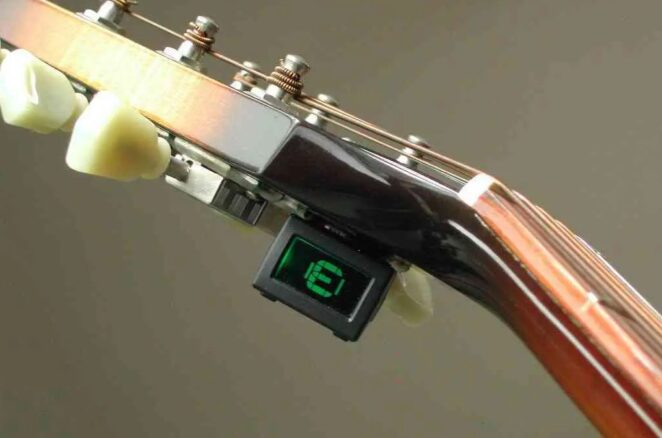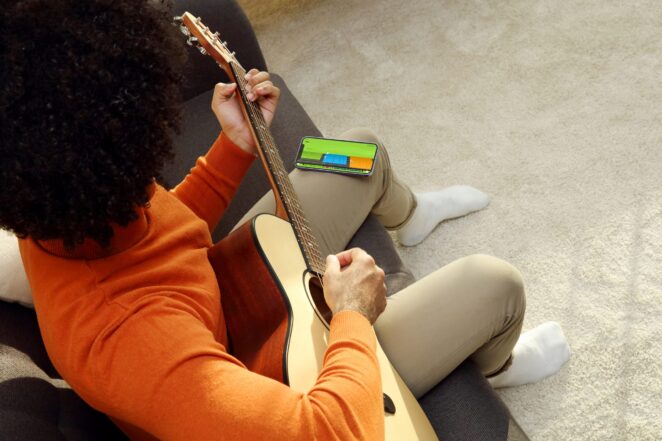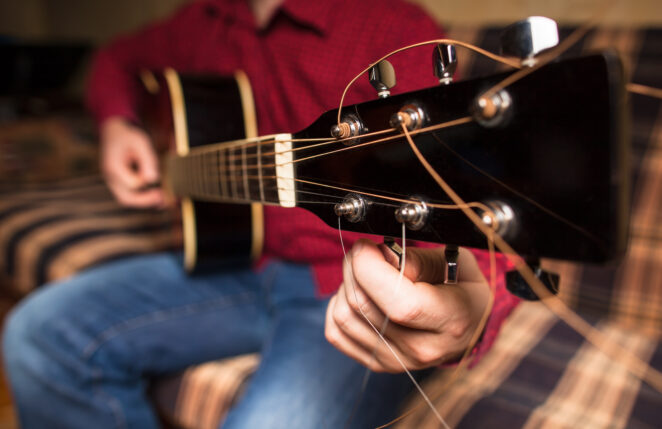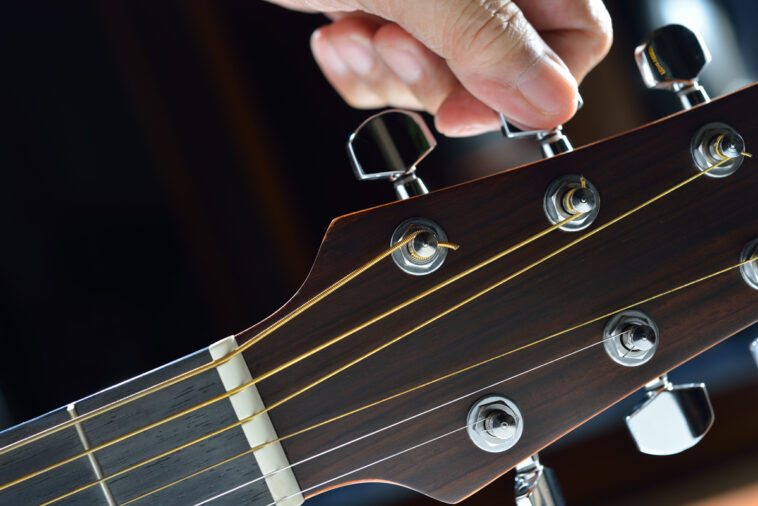Whether you’re a beginner learning to play the guitar, an amateur, or a professional, the ability to tune your instrument is a crucial skill. Tuning proficiency is a valuable trait for any musician, regardless of the level or type of instrument they play.
Not only guitars, but also instruments like the violin, cello, double bass, transverse flute, clarinet, oboe, and more, require proper tuning preparation. The tuning characteristics and method vary depending on the specific instrument.
In this article, we will delve into the various methods of tuning a guitar. There is no single ‘best’ method of tuning. What matters most is that the end result is correct and satisfactory. The tuning method should be tailored to your preferences, skills, and available equipment.
If you’re seeking an alternative to your current tuning technique, or you’re just starting to learn how to play, or you want to refresh your memory on how to tune your guitar, you’ll find all the comprehensive information you need on this topic in this article!
Discover how to play the C#m Guitar Chord Easy with ease by visiting this page – C#m.
How can you tell if your guitar is out of tune?

Tuning a guitar is an essential step before practicing and should become a habit for every musician. However, the question arises, how do we know if our instrument is out of tune?
At the beginning of your musical journey, any electronic devices or apps that aid in tuning can be very beneficial in identifying whether the guitar is out of tune. Both mobile apps and physical tuners operate on a similar principle.
To tune a guitar, gently pull a string and check the tuner’s screen to see if the selected string produces the correct sound. The device will then inform you whether your instrument is out of tune and to what extent.
On the other hand, if you have a good ear or are working on developing it, using your ear to check if your guitar needs tuning can be beneficial.
For those with some musical experience, we recommend playing a snippet from a song and comparing the sound with the original. If the performance does not quite sound as it should, it will be necessary to tune the guitar.
Tuning a guitar vs. knowing the height of the strings
Before diving into the specifics of tuning your guitar, it’s crucial to familiarize yourself with the names of the different strings on the instrument. Memorizing the pitch of the strings can help you tune your instrument more quickly and efficiently.
For electric, acoustic, and classical guitars, which all have 6 strings, the standard tuning is commonly used.
The corresponding sounds for the strings are: E, A, D, G, B, E (from lowest to highest). It’s worth noting that in musical notation, the guitar is an octave lower (this mainly applies to the classical guitar).
However, when it comes to popular music arrangements, an important distinction is the use of slightly different nomenclature for American music. The “B” sound is referred to as “b” in American music. Despite the different name, the sound is identical and is played in the same way.
Electronic tuners useful devices

Electronic tuners, also known as electronic reeds, are beneficial tools for both beginners and professionals. The market offers basic tuners, as well as more advanced ones, primarily designed for professionals performing on stage.
The most common devices are those you mount on the headstock of the guitar or those with a built-in microphone and jack cable input. These work well in most cases, especially if you don’t plan to perform on stage.
Conversely, foot-operated tuners are used during concerts. These floor tuners are designed for tuning electric guitars in challenging conditions, such as when there’s a lot of noise.
For home music-making, a basic, inexpensive model of an electronic tuner is sufficient. Here’s how to tune a guitar using this device:
- Turn on the tuner. If your tuner has a clip, attach it to the headstock of the guitar.
- Activate the guitar mode, if available. This feature simplifies tuning.
- Pull a string gently.
- Check if the tuner lights up green. If not, slightly adjust the corresponding key.
- Repeat this process for each string.
Note: If your tuner doesn’t have a guitar mode, you’ll need to familiarize yourself with the pitch of the following notes. For example, if you’re tuning the E1 string and the tuner displays C1, you should turn the key to make the string sound higher.
If the tuner shows an F1 sound, you should tune the string slightly lower. The direction of the key turn depends on whether you want to raise or lower the sound of the selected string.
Mobile app to help with guitar tuning

How do you tune your guitar using your smartphone? All you need to do is download a special mobile app to your phone. There are many free tuners available for both Android and iPhone iOS devices.
All you need to do is visit the Play Store or AppStore and type “tuner” or “reed” in the search engine. Then select the dedicated guitar tuning app from the list and download it to your phone.
Now all you have to do is launch the software and jerk the selected string. The app will indicate the sound the string makes. Use the keys to tune the guitar.
What are the advantages and disadvantages of a tuner in the form of a mobile app?
Advantages:
- free tuner
- intuitive to use
- always “at hand”
- recommended for the beginning
Disadvantages:
- lower sensitivity than electronic tuners
- ambient sounds may interfere with guitar tuning
It is worth knowing that online tuners are also available through websites. You can find many free tuners online without having to install a guitar tuning app.
Tuning by ear
For those with good hearing and anyone who wants to develop musical hearing, we recommend tuning a guitar “by ear.”
To tune the instrument correctly, you need a master sound. It can be obtained using a mobile app, an electronic tuner, a camertone or another instrument with a fixed tuning (such as a keyboard).
How to tune a guitar by ear?

- Play another instrument or play the a1 sound in the app.
- Shorten the highest string of the guitar (e1) at the 5th fret, play.
- Compare the two sounds.
- By turning the key, tune the guitar sound to the master sound.
- Shorten the next string (h) on the 5th fret and play.
- Compare the sound of the shortened string with the sound of the empty topmost string (e1).
- By turning the key, tune the sound of the shortened string (h) to the sound of the empty string (e1).
- Shorten the next string (g) at the 4th fret and play.
- Compare the sound of the shortened string with the sound of the empty string (h).
- By turning the key, tune the sound of the shortened string (g) to the sound of the empty string (h).
- Shorten another string (d) at the 5th fret and play.
- Compare the sound of the shortened string with the sound of the empty string (g).
- By turning the key, tune the sound of the shortened string (d) to the sound of the empty string (g).
- Shorten another string (A) at the 5th fret and play.
- Compare the sound of the shortened string with the sound of the empty string (d).
- By turning the key, tune the sound of the shortened string (A) to the sound of the empty string (d).
- Shorten the lowest string (E) at the 5th fret and play.
- Compare the sound of the shortened string with the sound of the empty string (A).
- By turning the key, tune the sound of the shortened string (E) to the sound of the empty string (A).
Once you know how to tune the guitar, and despite our attempts the instrument does not tune, it is worth looking at the guitar and looking for the cause. Severely worn strings may be responsible for this condition, in which case they should be replaced with new ones.
On the other hand, in the case of an electric guitar, the inability to tune the instrument may be influenced by a misaligned censer or the curvature of the neck.
In such a case, it is worth asking for help from a luthier or the store where you bought the instrument.




